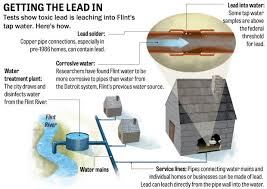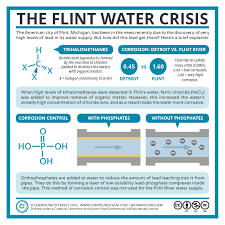
Does the Flint Water Crisis matter? Could this man-made disaster happen in any city in America? Many people didn’t believe that the Flint Water Crisis could ever happen, but it has. Clearly money, power and class worked as undeniable factors in the Flint Crisis.
The Flint Water issue unfortunately is the latest blow for the community struggling for decades with piping neglect. Looking back at 1999, the story begins at the end of the economic boom created by the overseas exodus of GM. Flint spirals downward for decades as GM jobs went to China.
The Flint Water Management neglect is traceable in the timeline done by Andrea Newell, “Flint Water Crisis a Timeline” on TriplePundit.com
A General Motors factory in Flint dumped industrial waste in the Flint River for decades before the formation of the U.S. Environmental Protection Agency. Clean-up attempts have been successful, but the water remains 19 times more corrosive than Lake Huron — Flint’s former drinking water source.
1999
GM moves operations and eliminates jobs, resulting in a higher unemployment and crime rate in Flint.
2011
Rick Snyder takes office as governor of Michigan.
Snyder expands Michigan’s emergency manager law (Public Act 4) to give EMs more power.
Nov. 29: Snyder appoints an emergency manager for Flint. The city will have four emergency managers before its EM rule ends in 2015 (Michael Brown, Edward Kurtz, Darnell Earley and Jerry Ambrose).
Snyder’s budget is passed, increasing taxes on individuals and lowering them on businesses.
A study finds that the Flint River needs an anti-corrosion agent to be drinkable at a cost of around $100 a day. This agent is not added when the city later switches to the Flint River in 2014. Experts say using this agent from the beginning would have prevented 90 percent of Flint’s water problems.

2012
Voters repeal Public Act 4. Within weeks, Snyder and the Michigan legislature pass PA 72in its place, attaching an appropriation to it and making it voter referendum-proof.
2013
Flint water rates are among the highest in the state. Residents want relief.

March: The Flint City Council votes to stop using water from Lake Huron through the Detroit system, join the Karegnondi Water Authority, and get water from Lake Huron through that pipeline (but there is no mention of the Flint River). The state agreed with the water switch to save $19 million over eight years ($5 million in two years).
April 16: Emergency manager Ed Kurtz signs the agreement.
April 17: Detroit notifies Flint that although it will be three years before the new water source is available, Flint can pay a temporary higher rate, or it will stop selling water to Flint in a year (April 2014). There is some dispute as to whether or not this was made up by Snyder’s administration to excuse the switch.
2014
March: Flint announces that it will use the Flint River for drinking water until the KWA pipeline is complete.
April 25: The city flips the switch to begin sending Flint River water through its pipes. No anti-corrosive agent was used. As officials celebrate, Mayor Dayne Walling hails it as a “historic moment.” He says “the water quality speaks for itself,” and the Michigan Department of Environmental Quality (MDEQ) says “residents won’t notice any difference.”
May: Residents begin complaining about the water. It looks funny, smells funny and tastes bad. MDEQ says its tests show it meets state standards.

2015
Jan. 4: Officials now say that Flint’s water contains such a high level of trihalomethanes (TTHM) that it’s in violation of the Safe Drinking Water Act. However, they assure residents that people with normal immune systems have nothing to worry about.
Jan. 7: In government offices in Flint, the administration delivers bottled water for workers to drink because of the TTHM water tests. Officials continue to tell residents that the water is safe to drink.
Jan. 12: The Detroit Water and Sewage Department offers to reconnect Flint and waive the $4 million connection fee. Flint’s environmental manager, Darnell Earley, says no.
Jan. 13: Protesters rally outside City Hall to demand lower water bills and a return to Detroit’s supply. Hundreds turn out at a forum, some complaining of rashes on children. Detroit offers to let Flint switch back, but Earley says it would cost too much.
Jan. 20: Flint Mayor Dayne Walling asks Gov. Snyder for help with several water problems, including lower rates for new customers and more frequent reporting on water test results statewide. “Both the state and federal government need to be actively involved in improving Flint’s water system. The governor has a particular responsibility due to Public Act 436,” (the state’s emergency manager law).
The mayor sends his request to Snyder and asks his supporters to contact the governor as well if they want “to implement my plan and ensure Flint’s water is safe.”
##################################################
Unfortunately, these misfortunes occurred in history and kept occurring today.